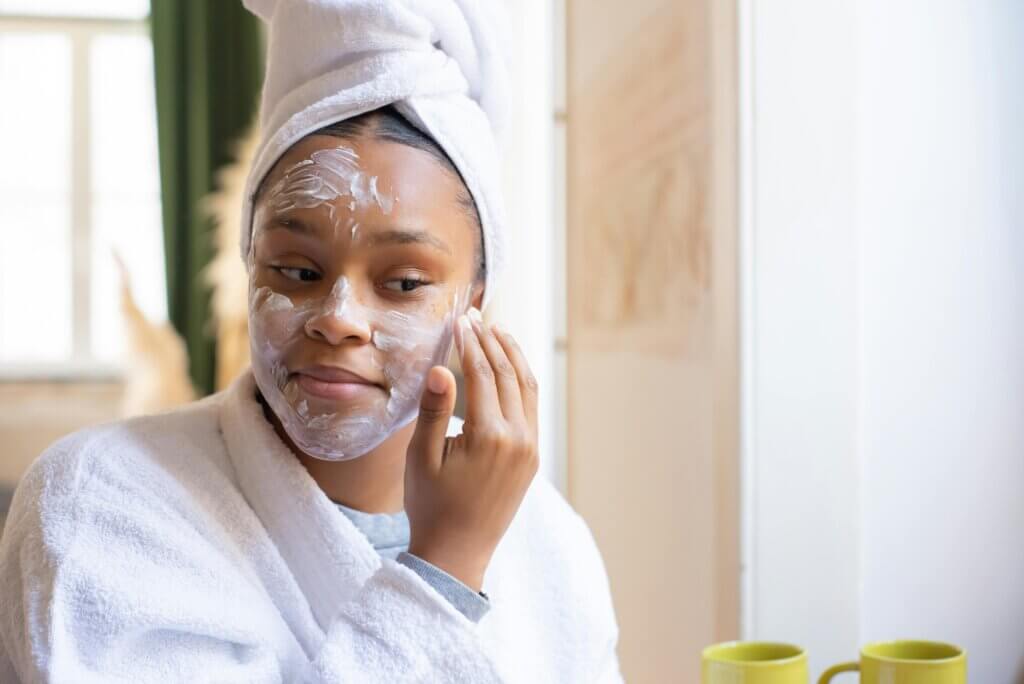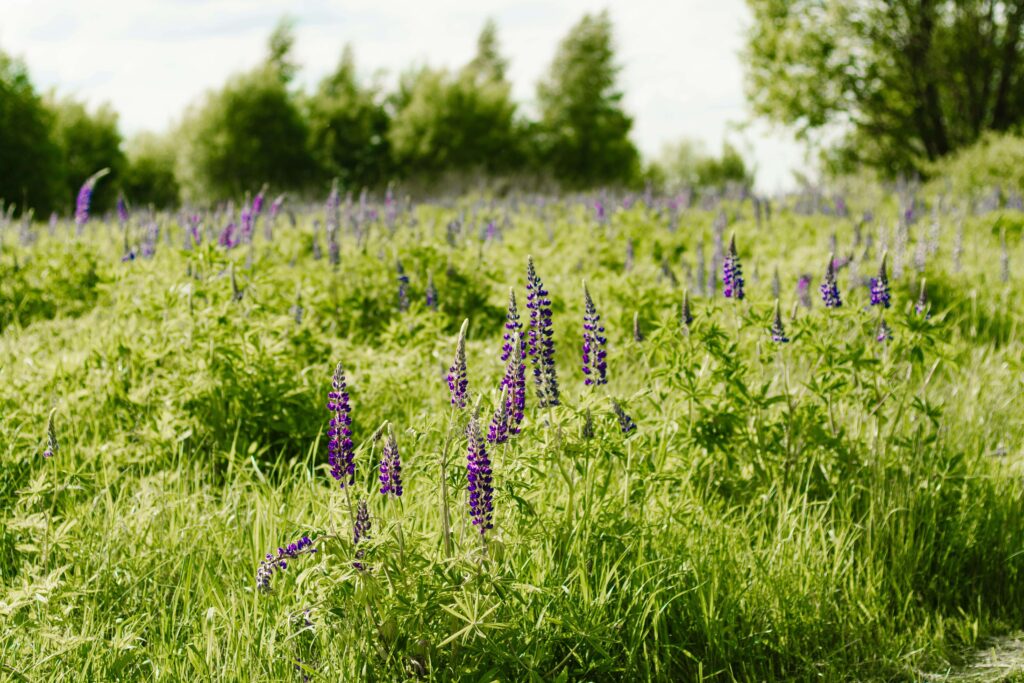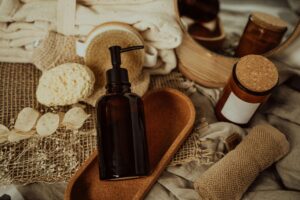Disclaimer: This post contains affiliate links, including links to Amazon. As an Amazon Associate, we earn from qualifying purchases at no additional cost to you. Thank you for supporting Low Tox & Thrive!
Taking care of your skin doesn’t have to involve expensive products or trips to the spa. Sometimes the best remedies come from ingredients you already have in your kitchen.
DIY face masks are a fantastic way to nourish your skin without worrying about harsh chemicals or preservatives. In this post, we’ll share three simple and effective DIY face mask recipes that cater to dry, oily, and combination skin types.
Understanding your skin type
Before diving into the recipes, it’s important to understand your skin type to choose the right face mask. Here’s a quick overview:
- Dry skin often feels tight, rough, or flaky, and is prone to redness and irritation. It needs hydration and moisture to repair and protect the skin barrier.
- Oily skin tends to look shiny and feels greasy to the touch, especially in the T-zone (forehead, nose, and chin). This skin type is more prone to clogged pores, blackheads, and breakouts.
- Combination skin is exactly what it sounds like—a mix of oily and dry areas. Typically, the T-zone is oily, while the cheeks may be dry or normal. This skin type requires a balance between moisturizing and oil control.
1. DIY face mask for dry skin: Honey and avocado mask
If your skin feels dry, dull, or flaky, this honey and avocado mask is the perfect solution to restore moisture and soften your complexion. Dry skin needs extra hydration to maintain its barrier function, and these ingredients work together to provide deep nourishment.
Ingredients
- ½ ripe avocado
- 1 tablespoon honey
- 1 teaspoon plain yogurt (optional for added moisture)
Instructions
- Start by mashing the avocado in a small bowl until smooth and creamy. Avocado is packed with vitamins E and C, which are essential for skin repair and hydration.
- Add the honey to the mashed avocado and mix well. Honey is a natural humectant, which means it draws moisture from the environment into your skin, keeping it hydrated.
- If your skin needs extra moisture, you can add a teaspoon of plain yogurt for its hydrating and soothing properties.
- Once the mixture is smooth, apply it to clean skin, avoiding the eye area. Let the mask sit for 15–20 minutes, allowing the nourishing ingredients to soak into your skin.
- Rinse with lukewarm water and gently pat your face dry with a soft towel. Follow up with a moisturizer to lock in the hydration.
Tip for extra hydration: For even more moisturizing power, consider adding a few drops of jojoba oil or olive oil to the mixture. Both oils are great for dry skin because they mimic the natural oils your skin produces, ensuring a smooth, hydrated finish.
2. DIY face mask for oily skin: Clay and tea tree oil mask
If you have oily skin, you know how challenging it can be to keep your skin balanced and clear. Oily skin produces excess sebum, leading to clogged pores, blackheads, and acne. This clay and tea tree oil mask helps absorb excess oil while fighting off acne-causing bacteria, giving your skin a clearer and more refined appearance.
Ingredients
- 1 tablespoon bentonite or green clay
- 1–2 drops tea tree oil
- 1 teaspoon water or rosewater
Instructions
- In a small bowl, mix the clay with water or rosewater until it forms a thick paste. Bentonite clay is known for its oil-absorbing and detoxifying properties, making it perfect for oily skin.
- Add 1–2 drops of tea tree oil to the paste and stir until smooth. Tea tree oil is a powerful antimicrobial that helps reduce inflammation and prevents acne breakouts.
- Apply the mask to your face, focusing on the T-zone, where oil tends to accumulate. Be sure to avoid the sensitive areas around your eyes.
- Leave the mask on for 10–15 minutes, or until it begins to dry and tighten. As the clay dries, it draws out impurities and excess oil from your pores. Rinse with warm water and follow up with an oil-free moisturizer to keep your skin hydrated without adding extra oil.
Tip for clearer skin: If you experience frequent breakouts, try using this mask once or twice a week as part of your skincare routine. You can also add a pinch of activated charcoal for even more powerful detoxification and oil absorption.
3. DIY face mask for combination skin: Banana and oatmeal mask
Combination skin can be tricky to care for since you’re dealing with both oily and dry areas. This banana and oatmeal mask is designed to balance the skin by providing moisture where it’s needed while gently exfoliating the skin to keep it smooth and clear.
Ingredients
- ½ ripe banana
- 1 tablespoon oatmeal (finely ground)
- 1 teaspoon honey
Instructions
- Mash the banana in a small bowl until smooth. Banana is a great ingredient for combination skin because it provides hydration without being greasy.
- Add the finely ground oatmeal to the banana and mix in the honey. Oatmeal is a gentle exfoliant that helps slough off dead skin cells while soothing any irritation. Honey adds an extra layer of hydration and helps to balance the skin’s oil production.
- Apply the mask evenly to your face, focusing on both the oily and dry areas. Leave it on for about 15 minutes. As the mask dries, the oatmeal will lightly exfoliate your skin, while the banana and honey work to balance moisture and keep your skin smooth.
- Rinse with warm water, using gentle circular motions to exfoliate as you wash off the mask. Pat your skin dry and finish with a lightweight moisturizer to maintain hydration.
Tip for combination skin: If your skin is particularly oily in the T-zone, you can apply the clay and tea tree oil mask to your forehead, nose, and chin, while using the banana and oatmeal mask on the drier areas of your face. This multi-masking approach ensures that each part of your face gets the care it needs.
How often should you use DIY face masks?
For most skin types, using a DIY face mask once or twice a week is ideal. Overusing masks, especially those with strong ingredients like clay or exfoliants, can strip the skin of its natural oils and cause irritation. Always listen to your skin—if it feels dry or sensitive after using a mask, give it a break for a few days and focus on hydrating and soothing products.
Try one of these face mask recipes today
Whether you’re looking to deeply hydrate, control oil, or balance out your complexion, these masks provide a gentle and effective way to give your skin the TLC it deserves. Plus, knowing exactly what’s going into your skincare products gives you peace of mind that you’re avoiding potentially harmful chemicals.







